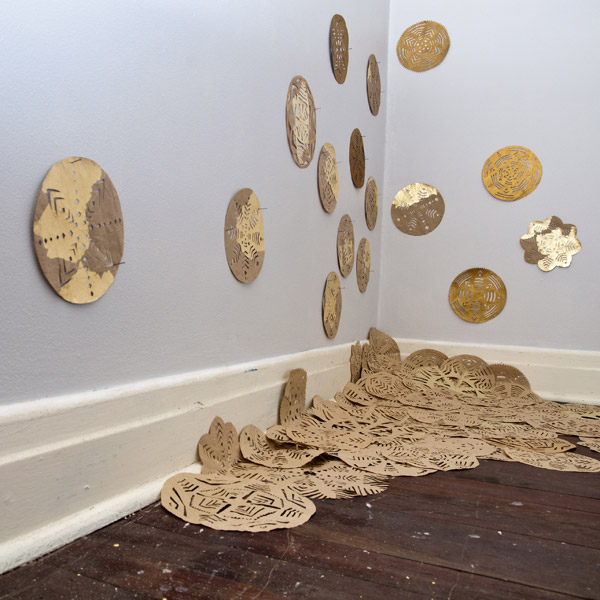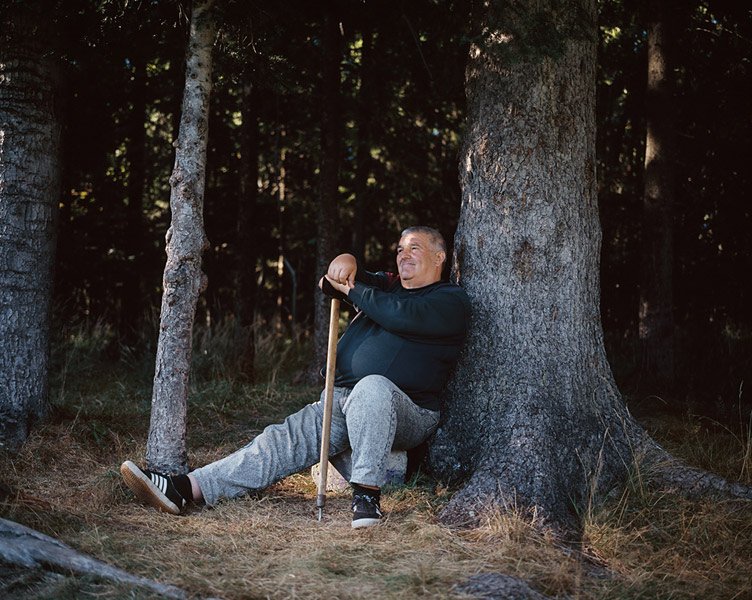Sketches of Poland
Christopher Young, 2011/15
I have always struggled with languages, even my own. Writing is excruciatingly frustrating with many rewrites and random scratchings being shoe-horned into a fragile form.
Learning another language has also proven very difficult and prone to embarrassing and often problematic errors. I, as many others, struggle to get my head around even simple concepts of grammar.
A recognition of a series of words, or even their understanding doesn't necessarily reveal the beauty that may lie below the surface. Paradoxically, some languages - ie. Portuguese - are so beautifully melodic that ignorance of the content is almost excusable. You could just as easily be humming along to the tax code.
Broad reading of many texts can expose patterns, connections, homages or reactions against other texts. Recognising a reference in a text can potentially open it up to a completely fresh and enriching reading.
Contemporary Art could be seen as being akin to a series of languages. Further to aesthetic attributes, artworks often require decoding for their true qualities to be evident.
To truly explore the visual arts requires not just vigorous and consistent consumption but also a conscious effort to place artworks in - an often fluid - context; to understand the motivations of an artist; and to explore what ultimately led to the creation of that artwork. This could be broadly termed 'visual literacy'.
The referential in an artwork - the 'joke' - is a powerful tool that can be used by artists to imbue work with more complexity. These homages can prove problematic in that often obtuse 'art about art' can be so exclusionary as to estrange an audience.
This is also a problem for work that explores seemingly exotic themes. A lacking of decoding mechanisms ('language' comprehension) makes it difficult for people to access and enjoy something completely.
This illiteracy - on an audience's behalf - is something that is difficult to overcome for creative practitioners. Artist statements can assist but they tend to draw visceral outbursts of frustration from many and tend to confirm the 'magic-folk' perception of creativity.
How then do you approach work that is completely foreign to your own experience?
**
In 2011, Elisa Markes-Young and I travelled to Poland. This was to be my inaugural Polish experience but for Elisa it was her first return to the country of her birth in 30 years. Over the course of three weeks we travelled over 3,500kms from the northern port city of Gdańsk through Toruń, Warsawa, Kraków and down to the south.
Contemporary Poland is a land of vivid contradictions which can be an enriching yet visually confusing experience.
Towards the end of our trip, driving into Zakopane in the Tatra Mountains was a truly sobering experience.
**
The garish colours, bombastic billboards full of gleaming teeth and thick veneer of kitsch weighed heavy on us all. The visceral shock of it contrasted vividly with Elisa's romanticised memories of this place. The Zakopane of 30 years ago was - in her words - emblematic of her Poland. Something she had elevated to a prized position in her ideals, sensorially thick and saturated with Polishness. She was noticeably downcast as we were to stay in the area for a few days.
In the centre of the town, half-enthused mascots sold balloons and handed out flyers for Góralski-themed restaurants. Small stands had been set up at various points on the main street which sold Oscypki (smoked sheep cheeses), pickled mushrooms, honey and breads. The air was a dense mixture of smells under an overcast sky.
**
One morning, while out walking, I'd pushed on a bit from the others to allow myself a bit of time to make some images of a small burnt out barn. This sat in a field before a startling, sunlit mountain range.
I didn't notice him at first but a large man sat under a tree. He rested one hand on a small axe and was seemingly undisturbed by my appearance. I clumsily tried to explain what I wanted to do and he seemed content enough.
The others arrived and sparked up a conversation with him as I made my images. He was guarding his large trees as thieves had brazenly stolen one the night before. They had driven up a truck and expertly removed it in the darkness. Wood was still a precious building material in the area and the theft was not unique.
I expressed an interest in making his portrait and he shyly posed for the two quick images I made of him.
Over those few days the fog slowly lifted and the outlines of Elisa's Poland sharpened. Stanisław Witkiewicz's architecture - the father of the so-called Zakopane Style - with its finely detailed wood-work overwhelmed its kitsch variations. An intimate graveyard with wooden altars, exchanges with beautiful old women selling Oscypki and comical exchanges with a boisterous, high-volume waiter all lifted Elisa out of the grey.
She drank with relish from the colours, textures, shapes and patterns. All of these rediscovered once you got past the plastic-wrap of this increasingly westernised town.
We sat one night in a restaurant, drunk on the heavy food and wine, listening to a trio of musicians. They drew painful, clumsy, almost screeching notes from their instruments. They sang simple songs with crude voices - the words foreign to my ears but seemingly sorrowful - that somehow settled into an appealing rhythm. The sound is hard to describe but it could be seen as emblematic of the experience.
Elisa was ultimately sad to leave, having - in some small way - recovered a sliver of her past. This revisit to Poland, however problematic, forms the basis of The Original Place.
**
Simple hand-cut stamps on unadorned linen, paper cuts and crocheted forms hint at a folksy past. One where traditions, routines and rhythms of the seasons permeate a collective memory over generations. Humble motifs, often deposable in festive events through Elisa's hands become reliquaries, iconic and elevated above their often utilitarian station.
Symbols repeat, distort and morph not only in their shape but also in their materials. They increase their intensity, becoming more tactile, more precious, more substantial.
The Original Place - Jarzębina is a complex, finely embellished piece across five panels. Each panel varies in it's shape with gold paint, crocheted borders, twinkling spangles and descending tentacle-like forms. It illustrates a custom where children would take Rowan Tree berries and string them together to make a necklace. This simple children's jewel evolves from left to right in the work, slowly forming from a seemingly random cluster of red forms.
The infinity-like looping symbol again hints at this practice being seasonal. A transient and ephemeral happening is immortalised in the phrasing of the artwork.
[This text was discontinued and ultimately never completed.]
Contact Us
Phone: 0421 974 329 (Chris)
Email: write to us!
Newsletter: Subscribe
Web: zebra-factory.com


